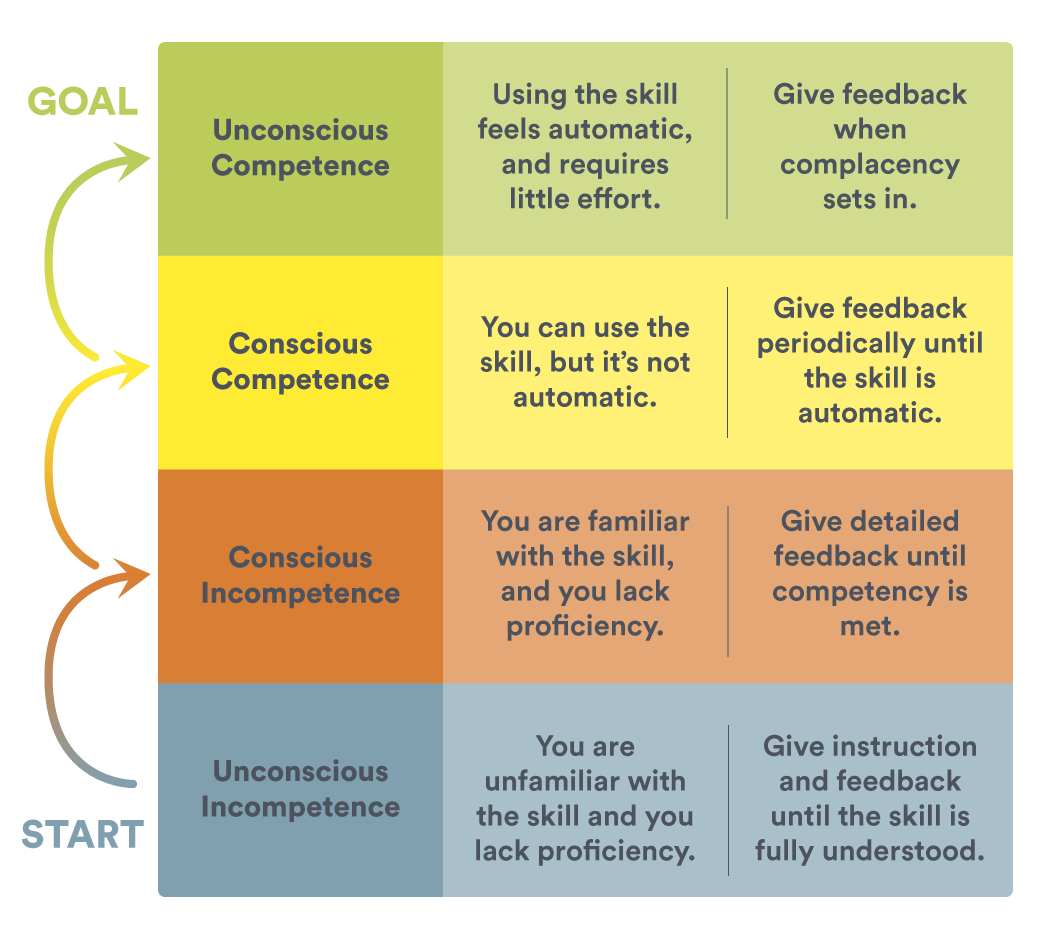 As you know, there is a huge difference between telling someone what to do and actually empowering them with the skills and tools needed to do it. Would you expect someone would be able to bowl without a ball or being shown how to do it?
As you know, there is a huge difference between telling someone what to do and actually empowering them with the skills and tools needed to do it. Would you expect someone would be able to bowl without a ball or being shown how to do it?
It’s obvious that coaching is important. But how are you supposed to fit coaching into your busy schedule as a manager? How do you make sure that your team members receive a level of coaching that is both personal and drives results?
Managers with well-developed coaching skills are able to ask the right questions, steer people in the right direction, and keep their team encouraged and driven to achieve a specific goal.
The process of coaching for leaders begins with opening up a channel of transparent and honest communication between the coach and the learner. This needs to be a two-way channel, with both parties willing to listen closely to one another. Without this, no progress will be made, and coaching will be all but impossible.Something worth remembering is that a coach isn’t necessarily a subject matter expert, but rather a vehicle through which people achieve greatness.
Anyone can become a good coach, and your ability to do so relies on building a framework that works well for you.
In this guide, we’ll walk you through how to improve your coaching skills by understanding your team members’ competency levels, and developing your feedback and follow-up process accordingly.
How to coach based on competency
Coaching for leaders starts with determining the competency level of the person you’re coaching. The competency level of the team member will determine the level of depth you need to go into during your coaching session.
If you’re coaching a new employee the same way that you’re coaching someone who has been around for years, you will be sorely disappointed by the results of your coaching sessions. Understanding which step of the competency cycle the team member inhabits and what skills they bring to the table is crucial to providing the best possible instruction, feedback, and follow-up to your employees.
This infographic below outlines the four stages of the competency cycle, and the frequency/type of feedback that needs to be given.

Stage 1: Unconscious Incompetence

The person has no competence on the given subject matter and is unclear on where exactly the deficit lies. This stage is reserved for people with little-to-no knowledge of the task at hand, and lack of background information about the topic.
In order to get to the next stage in the competency cycle, you need to
- Introduce the skill
- Instruct the team member how to perform the skill
How to introduce and instruct a skill
When introducing a new skill to an employee before the actual coaching process starts, there are a few things every good manager should outline:
- What it means to perform the skill well, what mastery looks like
- Why the team member needs to achieve proficiency in the skill
- How their comprehension will help the organization as a whole
- The steps you’re going to take to help them achieve unconscious incompetence
To instruct a team member how to learn a task, use the acronym EDGE:
E: Explain
- Give the employee a basic understanding of the steps needed to do the skill
D: Demonstrate
- Do the task yourself
G: Guide
- Help them perform the skill themselves, walk them through the process
E: Enable
- Guide them through the skill until they are able to do it themselves to a degree
Stage 2: Conscious Incompetence

Although the person isn’t yet capable of fully performing the task, they understand what aspects need improvement, and the keys to success for the given objective. At this point, you’ve explained the task, and they’ve even tried it themselves.
To move on to the next stage in the competency cycle, give meaningful feedback that reinforces the tenants of the skill.
How to give good feedback while coaching:
 Be specific
Be specific
If you really want to see improvement from your team, make sure to be as specific as possible when giving feedback during the coaching process. Managers who give vague feedback are unlikely to see growth in the skills of their employees and often have failing teams.
Focus on positives as well as areas for improvement
Developing a sense of confidence in your team members is crucial in achieving buy-in during the coaching process. If you only focus on the negative aspects of an employee performing the skill, you’re communicating to them that they’ve seen no progress. Make sure to focus on what they’re doing right in addition to where they can improve, and watch as their confidence grows over time.
Craft feedback about the task, not the person
You never want your employees to feel attacked. Someone’s ability to complete a task or learn a skill has nothing to do with their worth as a person. Keep your areas of feedback focused on the skill itself, as opposed to the person trying to learn it.
Emphasize effort and growth – not just results
Staring at the peak of a mountain during a hike can help you visualize yourself at the top. Looking down the mountain at all of the ground you’ve already covered, however, can give you the extra burst of motivation needed to get to the top. The same thing can be said about skills development. When a team member sees that they have grown in their abilities, they have a better understanding of how they can develop their skills even more. During your coaching process, be sure to point out the growth you’ve seen in the team member and the steps they can take to see even more progress.
Be sure to follow up with the employee regularly to determine what their struggles are, and how you can help them achieve competence in the task.
Stage 3: Conscious Competence

The skill has been learned, but the person isn’t yet completely capable of completing the task without careful consideration and some level of guidance.
At this point, your feedback sessions should become less frequent than the last stage, but still frequent enough to help them grown in their abilities.
As a manager, it’s your job to keep tabs on their progress as they achieve mastery at the skill. Are there small things they could work on to make completing the task more efficient? Are there roadblocks keeping the task from being “automatic?” Schedule follow-up meetings to help them discover areas of improvement, and express confidence that they will become even more of an expert at the given skill.
Stage 4: Unconscious Competence

The task can now be completed with ease and is considered “second-nature.”
You’ve succeeded in helping the team member achieve mastery. Nice work! At this stage, your feedback should be centered around expressing satisfaction in their progress, and helping them get back on track if complacency sets in.
How to spot complacency
Once someone has achieved unconscious competence, there’s a good chance they’ll become complacent sooner or later. When there is less room for growth, there also seems to be less reason to try and achieve it.
 Some signs that your employee is becoming complacent in their newfound skill are:
Some signs that your employee is becoming complacent in their newfound skill are:
- Their error-rate increases
- They are focusing more on speed and total output than quality of work
- Growth has stopped, and their skill level has plateaued
In order to curtail complacency, a manager with great coaching skills is always encouraging their employees to get better at what they’re doing. This can mean offering incentives for those who achieve a challenging goal or creating a culture of constant growth by recognizing those who continue to improve over time. Each organization is different, so the way in which you encourage development depends on the motivations and preferences of your team.
Why feedback and follow-up are so important in the coaching process
The reason why coaching is so crucial to the success of a business is because it creates fluency. Fluency only comes when someone is able to improve on their mistakes and shortcomings, which is a function of giving performance feedback that is applicable and growth-oriented. Solid feedback and follow-up is the fuel of good coaching and can be done easily with enough practice.
The follow-up aspect of performance feedback is the most crucial step and can increase efficiency of learning tremendously if done right. Measuring ability, knowing where the trainee stands in the competency cycle, and having meaningful conversations about strengths and weaknesses result in a far better coaching process for all parties. Check-ins and follow-ups help give the trainee perspective and make the trainer more aware of what needs to change in their process. This ties into the communication aspect of coaching but goes deeper and further than surface conversations.
As we outline in our Coaching Job Skills course, coaching is ALWAYS an ongoing task, and takes commitment by you as a manager.
Achieving Management Success through Coaching

The great thing about a manager with great coaching skills is that they rarely leave a bad taste in the mouth of those they mentor. Coaching can be a great way for business leaders to build sustainable, healthy, and transparent relationships with employees which is important, because 45% of people say that lack of trust in leadership is the biggest issue impacting their work performance. Thorough, thoughtful coaching lets employees know that you care about their progress, and that you’re invested in their success. Once a leader or manager can get someone to the “unconscious competence” level of the competency cycle, they are autonomous, and trust is far easier to achieve.



